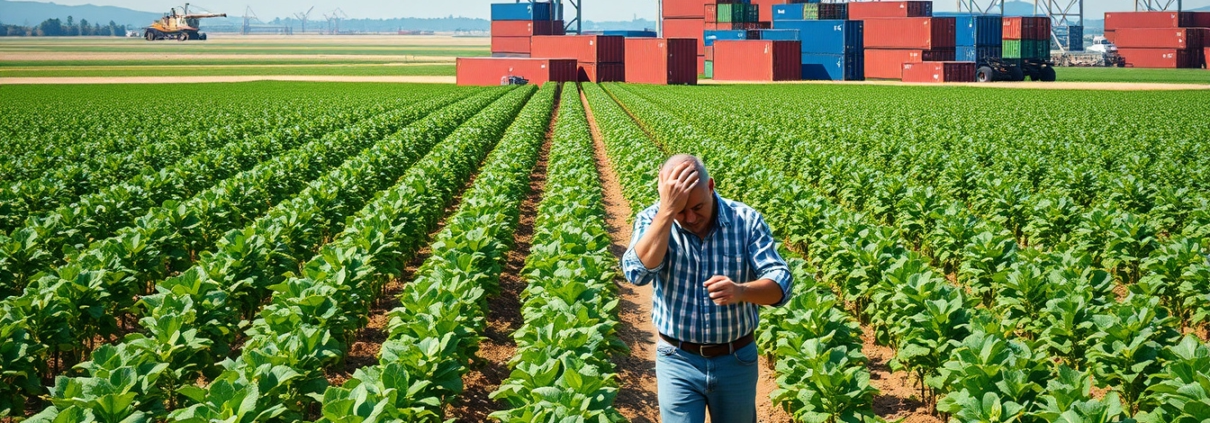China’s Soybean Stockpiles Soar: U.S. Farmers Face Frustration and Failed Trade Promises
China Faces Surplus of Soybeans While U.S. Farmers Grapple with Frustration Over Trade Stalemate
November 17, 2025 — China’s soybean stock has grown to its highest level in years. American farmers feel the strain. Beijing buys fewer U.S. soybeans. This slow buying happens even though trade deals exist. The move casts doubt on recent claims made by U.S. President Donald Trump. It shows the tough road in U.S.-China agriculture trade.
Slow Progress on U.S. Soybean Sales to China
After the meeting of President Trump and Chinese President Xi Jinping in South Korea, China bought almost no U.S. soybeans. The U.S. Department of Agriculture records only two deals with a total of 332,000 metric tons from October 2 to November 12. This result is far less than the 12 million metric tons that were expected by the end of 2025.
Michael Sobolik, a senior fellow at the Hudson Institute, said Beijing’s promises to American presidents do not last long. He thinks China may slow its soybean buys. This delay helps China hold on to soybean trade as a tool while it talks with the Trump administration amid other political strains.
High Bean Stockpiles Undermine Demand
China has built large soybean reserves in recent months. Processors, pig farmers, feed makers, and state stockpiles all join in. Port stocks hit 10.3 million tons on November 7, up by 3.6 million tons compared to last year. Crushers also report the highest stock levels since 2017.
Even with steady imports—9.48 million tons in October, a 17.2% jump from the year before—China shows little near-term need for U.S. soybeans. In the first ten months of 2025, China brought in 95.7 million tons, up by 6.4% from 2024. Soybeans from Brazil make up almost 80% of that total.
Brazil’s Growing Soybean Dominance
Brazil is set to harvest a record soybean crop next year. This crop adds more strain for U.S. farmers. Chinese buyers seem to choose Brazilian soybeans because they cost less than the U.S. ones even after China cut tariffs on American soybeans.
This month, China raised its soybean buys from Brazil and pre-booked large shipments for December and early 2026. ### Little Sign of Definitive Purchase Programs
Experts do not see a strong buying plan from state grain importers such as COFCO and Sinograin that usually handle bulk purchases. Arlan Suderman, chief commodities economist at StoneX, noted that there is little evidence that China is close to meeting the set purchase targets.
China has made some public moves like restoring import licenses for several U.S. soybean exporters. It also appears open to agricultural talk. Still, its actual buying pace remains slow and inconsistent.
Impact on U.S. Farmers and Political Implications
The drop in Chinese soybean purchases hurts American farmers. China has long been the top market for U.S. soybeans. In 2024, U.S. soybean exports to China were worth about $12.6 billion. President Trump called China’s reduced buying an act of economic hostility.
Sabrin Chowdbury, who heads commodities at BMI Research, said China’s soybean imports may rise and fall with political changes. Soybeans stay a key part of U.S.-China trade talks.
Broader Trade Context and Future Risks
The trade issues over soybeans show that China uses agricultural imports to tilt U.S. policies. This tactic appeared during the Trump era when China cut back on soybean buys in response to U.S. tariffs.
China now relies more on South American soybeans. This shift brings risks like higher prices, longer shipping times, and changes in weather affecting crops. For U.S. farmers who hoped that the recent trade deal would soon bring back China’s demand, the growing bean stockpiles at Chinese ports warn that the challenge may last longer.
For more news on the U.S.-China soybean trade and global agriculture, follow our live updates and expert analysis.
Full money-growing playbook here:
youtube.com/@the_money_grower









